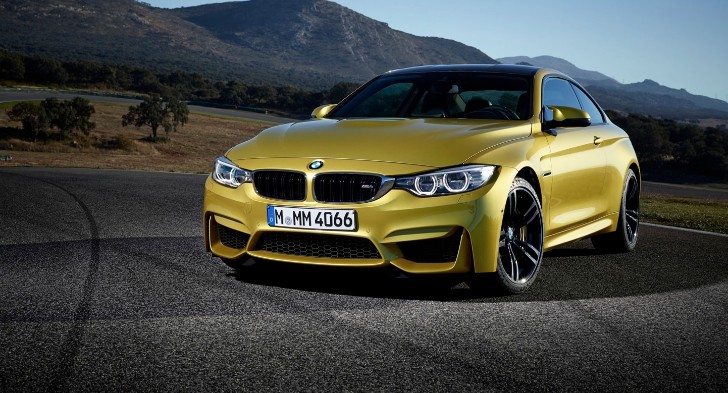Now that we got to look at the brand new BMW M3 and M4 in all their grandeur it’s time to take a deeper look into what they can actually do, apart from looking good in Yas Marina Blue and Aurum Dust.
The car will be sharing a 3-liter inline 6-cylinder engine that uses two monoscroll turbochargers to raise the power output to 431 HP and 550 Nm (406 lb-ft) of torque, levels that recommend the two as athletic and fast models. That power will be then transmitted to a brand new 6-speed gearbox that is more compact and 12 kg lighter than the one used before as standard. Next to the manual, customers will also get to fit their cars with the optional 7-speed DCT transmission.
From the gearbox, power will be sent to the rear wheels through a prop shaft made of CFRP that not only takes the weight further down but also allows the shaft to spin faster and gets rid of the center bearing, making it a single-piece component.
With the new launch control the cars reach 100 km/h (62 mph) in 4.1 seconds with the DCT gearbox and 4.3 seconds with the manual, impressive improvements over the retiring models, with the top speeds limited at 250 km/h (155 mph) or 280 km/h (175 mph) for the MDM package.
Fuel consumption has also been improved thanks to the lighter construction. The M4 Coupe weighs 1,497 kg (3,300 lbs) whilst the Sedan tips the scale at 1520 kg (3,351 lbs), allowing an average fuel consumption of 8.8 l/100 km (26.7 mpg) for the manual and 8.3 l/100 km (28.3 mpg) for the automatic.
What’s even more interesting is how little they two differ in size. The Sedan is 4,671 mm long (183.9 inches), 1,877 mm wide (73,9 inches) and 1,424 mm high (56 inches) whilst the M4 Coupe is exactly as long and only 7 mm narrower.
Standard driving stability systems include DSC with ABS and MDM (M Dynamic Mode), CBC (Cornering Brake Control), DBC (Dynamic Brake Control), Stability interaction DSC / Active M Differential, Dry Braking function and Start-Off Assistant whilst amongst the standard safety equipment you’ll find airbags for driver and front passenger, side airbags for driver and front passenger, head airbags front and rear, three-point inertia-reel seatbelts on all seats.
From the gearbox, power will be sent to the rear wheels through a prop shaft made of CFRP that not only takes the weight further down but also allows the shaft to spin faster and gets rid of the center bearing, making it a single-piece component.
With the new launch control the cars reach 100 km/h (62 mph) in 4.1 seconds with the DCT gearbox and 4.3 seconds with the manual, impressive improvements over the retiring models, with the top speeds limited at 250 km/h (155 mph) or 280 km/h (175 mph) for the MDM package.
Fuel consumption has also been improved thanks to the lighter construction. The M4 Coupe weighs 1,497 kg (3,300 lbs) whilst the Sedan tips the scale at 1520 kg (3,351 lbs), allowing an average fuel consumption of 8.8 l/100 km (26.7 mpg) for the manual and 8.3 l/100 km (28.3 mpg) for the automatic.
What’s even more interesting is how little they two differ in size. The Sedan is 4,671 mm long (183.9 inches), 1,877 mm wide (73,9 inches) and 1,424 mm high (56 inches) whilst the M4 Coupe is exactly as long and only 7 mm narrower.
Standard driving stability systems include DSC with ABS and MDM (M Dynamic Mode), CBC (Cornering Brake Control), DBC (Dynamic Brake Control), Stability interaction DSC / Active M Differential, Dry Braking function and Start-Off Assistant whilst amongst the standard safety equipment you’ll find airbags for driver and front passenger, side airbags for driver and front passenger, head airbags front and rear, three-point inertia-reel seatbelts on all seats.
